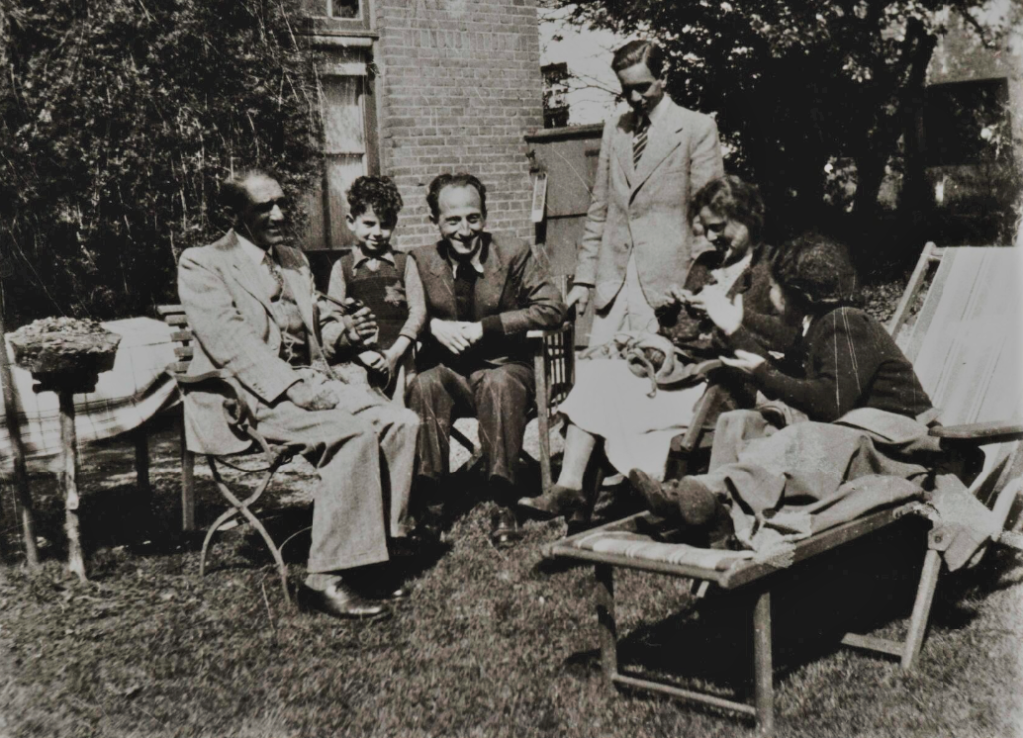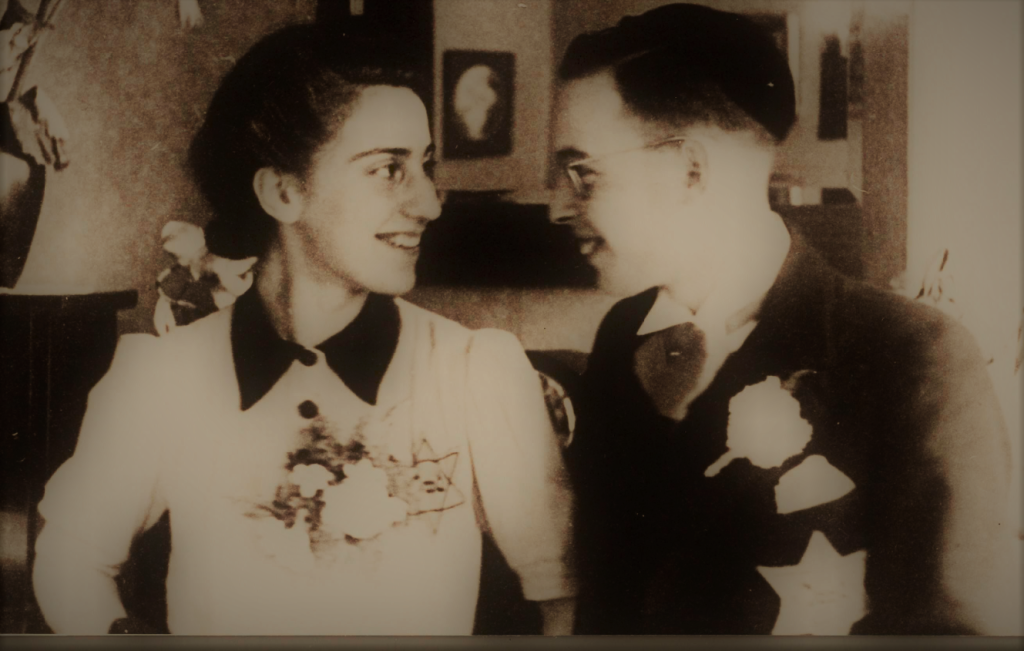
Starting in May 1942, wearing a yellow fabric star in the Netherlands, called the “Star of David,” was made compulsory by the Nazis. This measure made it easy to identify Jewish people and was designed to stigmatize and dehumanize them. This was not a new idea; since medieval times many other societies had forced their Jewish citizens to wear badges to identify themselves. With the coming of the French Revolution in the 18th century and Jewish emancipation in the 19th century, the “Jewish badge” disappeared in Western Europe.
However, in the 1930s the Nazis brought it back to Germany, and in May 1942 in the Netherlands. During the war, it was compulsory in all occupied countries. The one thing that puzzles me today is the eagerness of so many people and groups to put ‘badges’ on themselves. In my opinion, the only badge that matters is that of a Human Being, and the only rule that should apply is mutual respect for each other.
Behind every star was a life, a story.
The picture at the start of this post is of the admin team in Westerbork.

Group photo of the De Miranda and Lachmann families in the garden of De Miranda’s house on Sterrelaan in Hilversum, 1942.
From left to right: Alexander (Lex) de Miranda, 7-year-old Michael (Max) Lachmann, Heinz (Hans) Lachmann, standing 12-year-old Frank de Miranda, Anny de Miranda-Meijler and Tea Lachmann-Warszawski on the beach chair. The photo was probably taken by the other son Hugo de Miranda. Both sons tried to flee to Switzerland via France but were arrested. None of the family survived the war. The Lachmann family went into hiding in Limburg with the help of Pastor Henri Vullinghs and survived the war. Henri Vullinghs was a pastor in Grashoek and Grubbenvorst in Limburg and a Dutch resistance fighter during World War II. He was one of the largest organizers of pilot aid and hiding in the entire province of Limburg.

On 1 May 1944 sexton Stappers in Grubbenvorst was warned that the Sicherheitspolizei was on its way from Venlo to arrest the pastor. Stappers hurried to the monastery where Vullinghs lived because his own parsonage had been hit by a bomb. Unfortunately, he did not find him at home because the pastor had already left for the church on his bicycle. Just before the church on the street, Vullinghs was arrested and imprisoned. On 1 June 1944, he was transferred to Camp Vught where he was severely mistreated. On September 6, 1944, he was deported to the Sachsenhausen concentration camp and from there he went to the Bergen-Belsen camp, where he arrived at the end of March 1945, critically ill. Two weeks later he died there of dysentery.

Camp Westerbork. Outgoing transport, with a converted freight train, April 1943.
Nearly 107,000 people were deported from camp Westerbork in the 97 transports. On 15 July 1942, the first transport left for Auschwitz-Birkenau. From 2 March 1943–16 November 1943, there was a weekly rhythm: every Tuesday a train departed with a thousand to sometimes more than three thousand people. The last transport left on 13 September 1944.


Sander Waterman in boxing position. The Star of David is visible on his shorts. He was born in London on 10 June 1914, He was a boxer and boxed at Joop Cosman’s boxing school at the Jodenhouttuinen.
Because of his birth, he had a British passport despite his parents being Dutch. Sander was in the resistance. He was arrested for forging identity cards, but his brother Morest had done so. If he had said that, they would both have been imprisoned, so he kept quiet about it. Unfortunately, his brother Morest was murdered in Mauthausen.
Sander survived the war just like his wife Elisabeth Gobetz and their two children Sal (1941) and Joop (1943). The Waterman family was deported to Westerbork in 1943, where Joop was born, and then to Bergen-Belsen.
The British passport initially ensured that the family could stay for a longer period of time in Westerbork.

Johanna Winnik, at the age of about eight at her house on the Afrikanerplein in Amsterdam’s Transvaal neighbourhood, 1942. She was murdered at Sobibor on 2 April 1943 at the age of 8 years.

Annie de Jong-Wijnman and Maurits (Mau) de Jong from Zaltbommel with the Star of David on their wedding day, Sunday, August 23, 1942, in the synagogue N. Molstraat 13 in The Hague. They didn’t even get to celebrate their first anniversary. They were both killed on 16 July 1943 in Sobibor.

These were just a few of the many who were forced to wear the star of David. The pictures all came from the NIOD. They also have a theme on their website titled behind the star, I added a few more details.
source
https://www.holocaust.org.uk/star-of-david-identifiers
https://www.bl.uk/learning/histcitizen/voices/info/yellowstar/theyellowstar.html
https://encyclopedia.ushmm.org/content/en/article/jewish-badge-during-the-nazi-era
Reblogged this on History of Sorts.
LikeLike